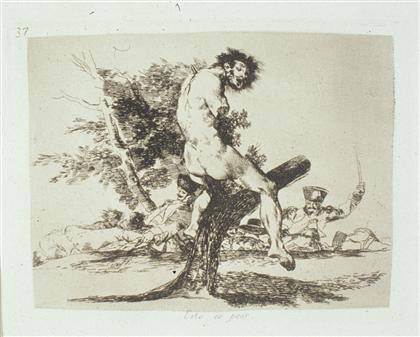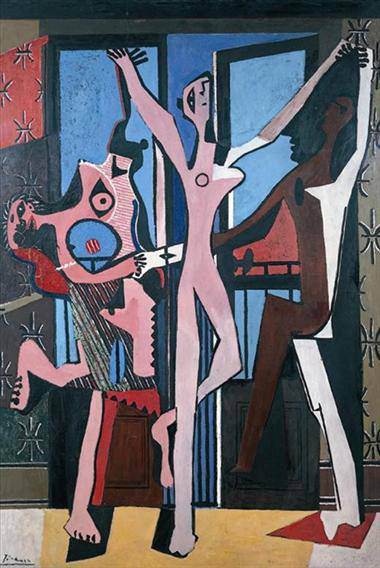
Francisco de Goya
Esto es peor. (This is worse.)
From The Disasters of War (1906 edition)
Etching, lavis, and drypoint on laid paper
6 x 8 3/16 inches (plate) / 16 x 22 inches (frame)
Georgia Museum of Art, University of Georgia; Gift of Mr. and Mrs. James B. Anderson
GMOA 1985.11.37
Goya’s ‘Disasters of War’ at the Georgia Museum of Art This exhibition features all 80 prints that make up the famous series by Francisco de Goya (1746–1828), depicting the lengthy Peninsular War (1808–1814) between Spanish forces and the invading army of Napoleon Bonaparte.
August 18 to October 28, 2012
]]>
Source: Georgia Museum of Art
Born in Fuendetodos, Spain, Goya is often regarded as the most important Spanish artist of the late 18th and early 19th centuries. His introduction to the royal workshops and his later promotion to court painter lasted four ruling monarchies and the remainder of his life. Goya’s relationship with the Spanish crown and its many successions greatly influenced the subject matter of his works.
Goya reached his peak of popularity during the enlightened monarchy of Charles IV, which ended when Napoleon’s armies invaded Spain in 1808. During the incursion, the artist witnessed mass executions of Spanish citizens who opposed Napoleon’s invasion and the installation of Bonaparte’s brother, Joseph, on the Spanish throne. From 1810 to 1820, Goya focused on the devastation and travesties of war during Spain’s struggle for independence from France in perhaps his greatest achievement as a printmaker, the “Disasters of War” series.
Viewed collectively, the series generates a narrative arc that is generally understood as three thematic groupings, following three historical phases. The first 47 images in the series reflect the horrors of the war and its effects on individuals who witnessed and experienced the atrocities leading to French occupation. The next 16 images address the famine that ravaged Madrid from August 1811 to August 1812. The final grouping is more allegorical than documentary and primarily serves as a commentary on Ferdinand VII, who ascended the Spanish throne after the Bourbon monarchy was restored with Napoleon’s fall in 1814. As the new king, he revoked the Constitution, reinstated the Inquisition and declared himself absolute monarch.
“Goya’s series is a telling indictment of war and its atrocities that rings as true today as it did when he created the images 200 years ago,” said Lynn Boland, Pierre Daura Curator of European Art at GMOA.
Related content
Francisco de Goya: the Black Paintings
Follow us on:


